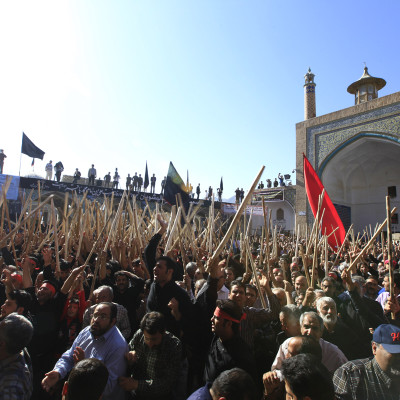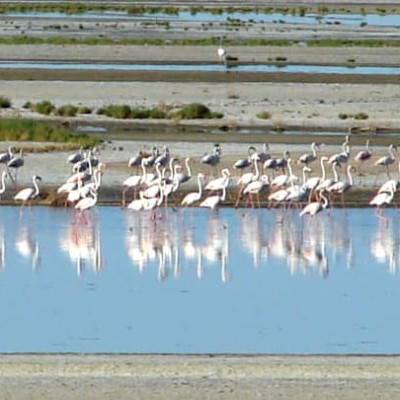With its turquoise domes, Islamic walls, famous bridges, and unique buildings, Isfahan is located in the heart of Iran. This province is the third most populous and the sixth largest province in Iran. In addition to Persians, the population of the province includes Bakhtiari Lurs, Georgians, and a small population of Armenians and Jews. A large part of its area is covered by deserts and is becoming larger due to droughts in recent years.
History
The oldest written documents available on the history of this region show that Isfahan was one of the famous areas of the land in the first century AD, known as "Sepahan". In a map drawn by Ptolemy, the ancient Greek philosopher and astronomer (150 AD), the name "Aspadana", which is placed in the current location of Isfahan, is noticeable.
This city has been the capital of Iran for many centuries and one of the most populous and beautiful cities in the world. Isfahan was one of the most prosperous and civilized cities during the Safavid period and used to be the capital of Iran for a while. Most of its historical monuments date back to this period.
Geography
Isfahan is bordered by the provinces of Yazd and South Khorasan to the east, Semnan, Qom, and Markazi to the north, Lorestan and Chaharmahal and Bakhtiari to the west, Kohgiluyeh and Boyer-Ahmad and Fars to the south.
The division is the hub of iron and steel production in the territory and one of the most dominant handicraft production centers in Iran.
Situated in the heart of the Iranian plateau, the province has vast areas covered by deserts. Some parts of it also include mountainous lands with a moderate climate.
The eye-catching Zayandeh Rud River, originated from the southwest mountains of Iran, passes through this province.
Climate
The desert regions of Isfahan are hot and dry in summers and very cold in winters. Mountainous cities in the province including Semirom, Khansar, Faridan, Fereydunshahr, and Chadegan have a moderate and pleasant climate.
Counties of Isfahan Province
Despite covering 10% of the country's area, Isfahan province is one of the most populous provinces in Iran, consisting of more than 20 counties. Aran and Bidgol, Ardestan, Isfahan, Barzok and Momenabad, Buin Miandasht, Tiran-o-Korun, Chadegan, Khomeini Shahr, Khansar, Khur and Biabanak, Semirom, Shahreza, Dehaghan, Fereydun, Fereydunshahr, Falavarjan, Kashan, Golpayegan, Lenjan, Mobarakeh, Najafabad, and Natanz are the counties of Isfahan province.
Isfahan
Isfahan is the third largest and third most populous city in the country and one of the main attractions for foreign tourists. The city is the cradle of Iranian and Islamic architecture and has been one of the most reputed manifestations of Iranian civilization in various eras.
You can find historical buildings with eye-catching and fascinating architecture in every corner of the city, some of which are registered as human heritage by UNESCO. Isfahan is a city of roofed bridges, domes, and spectacular minarets. Naqsh-e Jahan Square in Isfahan, including Sheikh Lotfollah Mosque, Imam Mosque, Qeysarieh Gate, and Ali Qapu Palace, along with its traditional bazaar, is one of the main attractions of the city. Menar Jonban, Si-o-se-pol Bridge, Khaju Bridge, Chehel Sotoun Palace, Bird Garden, Hasht Behesht Palace, Bagh-e Golha, Chahar Bagh, Vank Cathedral, and the largest aquarium in Iran are exceptional among the attractions of this memorable city.
Arān va Bidgol
Arān va Bidgol is one of the northern cities of Isfahan province, a desert city with many reservoirs and qanats. Maranjab Desert and Caravanserai, which is a destination for many desert enthusiasts from all over Iran and the world, is situated near the city. The people of Arān va Bidgol speak in a distinct dialect of Persian called "Arān va Bidgoli". The Jameh Mosque and Imamzadeh Mohammad Helal are two main religious sites in the city. Moreover, Reiseh Bathhouse, Namak Lake, and Ouyi Underground City are also amazing among other attractions.
Natanz
Natanz is also one of the desert cities of Isfahan, where people speak in one of the oldest dialects of Persian called "Raji". The historic village of Abyaneh, a suburb of the county, is a major destination for many travelers to Natanz. This village is known for its reddish adobe buildings and walls. Abyaneh Fire Temple is an example of Zoroastrian temples - remnants from the pre-Islamic era - which is considered the oldest structure in the region.
Kashan
Kashan is a city primarily reputed for its rose gardens, fragrant and red roses, along with ancient historical buildings. Its numerous attractions and special customs in holding the annual rose water festival attract countless domestic and foreign tourists to the place. Fin Garden and Bathhouse, historical houses like Borujerdi, Ameri, and Tabatabaei with stunning architecture, Agha Bozorg Mosque, and the traditional bazaar of Kashan with a variety of souvenirs and handicrafts, Niasar Waterfall, Niasar Forty Columns, Silk Hill, and Abuzidabad Desert are some of the points of interest that should not be missed on a trip to Kashan.
Chadegan
Chadegan is one of the lush and pleasant cities of Isfahan province, best-known as paradise, especially in summer, due to its abundant springs and rivers and pleasant climate. Zayandeh Rud Recreation Village, the Kaveh Shrine, which is stated to be the death and burial place of Kaveh the blacksmith and his son Karen, Zayandeh Rud Dam Lake, the Moazom al-Molk Mirpanj House, and the Analojeh Village are tourist centers of this city.
Golpayegan
Golpayegan is one of the historical counties of the province reputed for its delicious kebabs, beautiful nature, natural yogurt and dairy products. Jameh Mosque, Golpayegan Minaret, Golpayegan Dam Lake, Vaneshan Village - known for its rivers and their abundant waters, Gugad Historical Castle, and Golpayegan Pigeon House are exceptional among the attractions of the historical city.
Khansar
Khansar is a small city with beautiful nature placed close to the Golestan Mountain. The blooming of tulip flowers in spring in the foothills of this mountain changes the face of this region. Sar Cheshmeh Forest Park, Baba Pir Turk Shrine, Dareh Bid Village, Habibi and Abhari Houses are some of the attractions you can visit in Khansar.
Accommodations
Finding appropriate accommodations in Isfahan is not a big deal because of the city’s high-quality tourist infrastructure. In addition to hotels such as Kowsar, Abbasi, Aseman, Safir, Ali Qapu, Sepahan, Tourist, Sheikh Bahai, Khaju, and dozens of other hotels, the province's eco-lodges with traditional space and hospitality will host you on your trip to the province. Pasargad and Ashkani lodges, which host guests in a memorable atmosphere with local and authentic cuisine, are also some pleasant the eco-lodges of Isfahan province. You can also stay in local and traditional houses in cities that are further away from the capital city.
Restaurants
Tourists who travel to Isfahan throughout the year will have many choices for trying their favorite foods. From tasting the famous traditional dish of Isfahan, Beryuni, at Beryuni Azam to Iranian dishes and yogurt stews of Shahrzad and Khansalar, to an exceptional experience at the revolving restaurant of Aseman Hotel, you can try a restaurant with delicious cuisines everywhere in Isfahan.
Local Foods
Delicious and fatty Beryuni, Kaleh Joush, Eshkeneh, Zardak Kebab, Yakhmeh Torsh, Haleem Bademjan and Kashk-e Bademjan, Yakhni Lubia, Ghiymeh Rizeh, Ash Somaq (Sumac), Sholeh Beryan with Zireh (caraway), and the delicious dessert Khoresht Mast (yogurt stew), are foods that a trip to Isfahan provides the opportunity to taste.
Souvenirs
The most popular souvenir of Isfahan is Gaz-e Shirin, made from Angabin and pistachio or almond kernels. Golaki and Nabat of Isfahan, Golpayegani walnut and honey, dried fruits, Lenjan rice, rice cookies, Bereshetok, sugar cane walnut (made from a local peach called Alg), various silverware, calligraphy trays, and other handicrafts can be brought as souvenirs from a trip to Isfahan.
Handicrafts
Isfahan is considered the center of Iranian handicrafts where you can find an artisan or artist in every corner of the city as evidence. In addition to carpets, kilims and enamel, you can see artists occupied with seal engraving, stucco work, knotting, tile work, copper work, carving, pottery, pen turning, miniature painting, gold embroidery, and velvet weaving, in Isfahan markets, creating the most precious handicrafts of this province.
Customs and Traditions
Nowruz and New Year's Eve are of the most principal traditions for Isfahanis, just like other parts of Iran, which are celebrated with grand special ceremonies. The fire festival in Natanz, the large and small Chelleh ceremony, Esbandi and Esfand night in Kashan, Yalda and Charshanbe Souri, Saqa Khani in Moharram, water festival ceremonies, traditional and religious carpet washing ceremonies in Mashhad-e Ardehal are the chief customs and traditions of the province.


